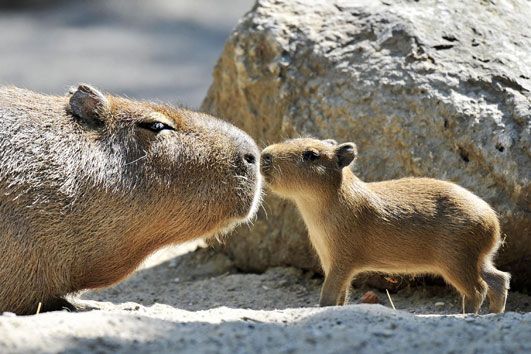|
|
Babe Animals
|
Nearly all animals undergo some form of sexual reproduction. They have a few specialized reproductive cells, which undergo meiosis to produce smaller, motile spermatozoa or larger, non-motile ova. These fuse to form zygotes, which develop into new individuals.
Many animals are also capable of asexual reproduction. This may take place through parthenogenesis, where fertile eggs are produced without mating, or in some cases through fragmentation.
A zygote initially develops into a hollow sphere, called a blastula, which undergoes rearrangement and differentiation. In sponges, blastula larvae swim to a new location and develop into a new sponge. In most other groups, the blastula undergoes more complicated rearrangement. It first invaginates to form a gastrula with a digestive chamber, and two separate germ layers — an external ectoderm and an internal endoderm. In most cases, a mesoderm also develops between them. These germ layers then differentiate to form tissues and organs.
|
|









